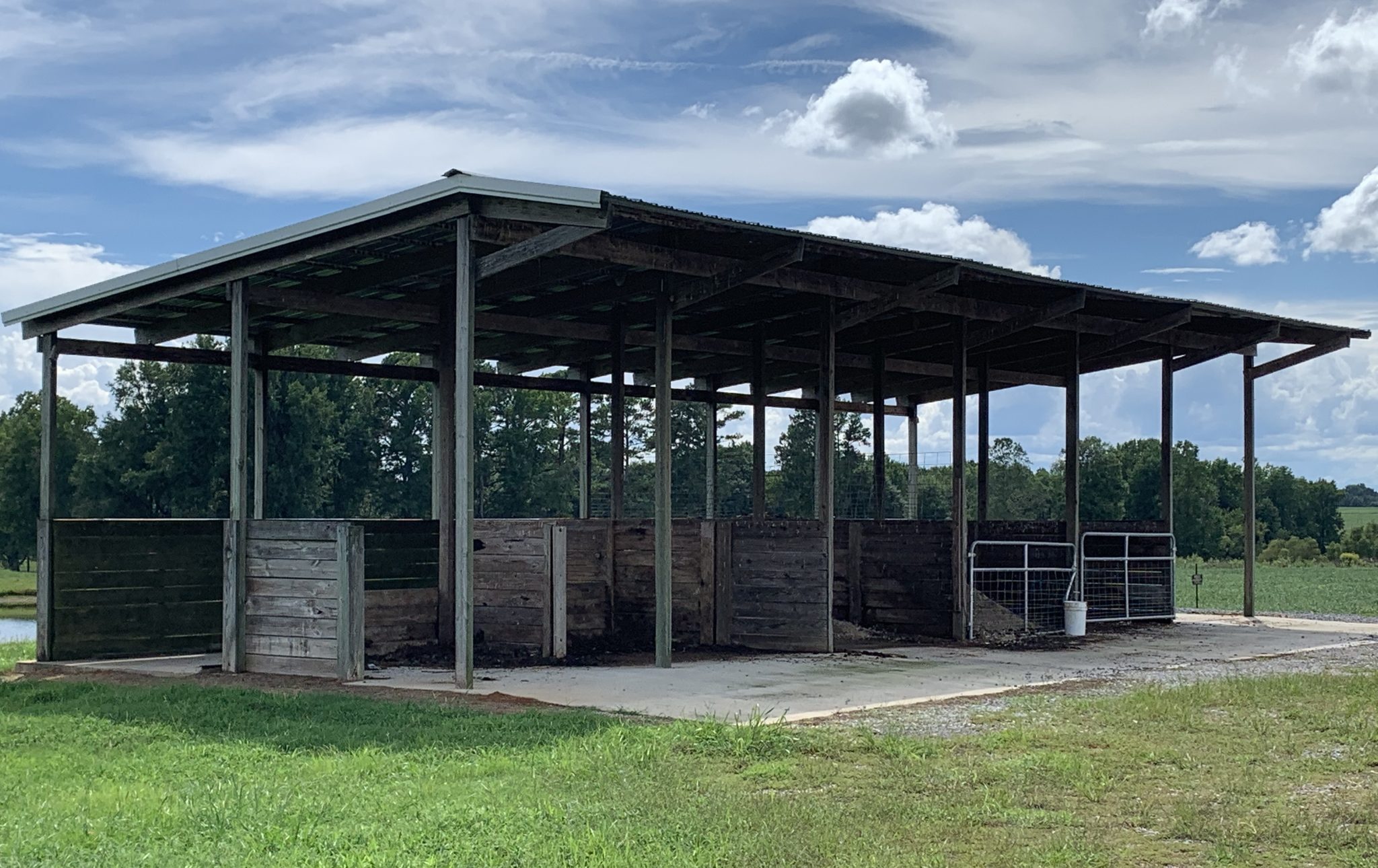Farm Management

Mortality disposal management is a significant consideration for contract poultry producers. As part of the typical broiler, breeder, pullet, and commercial layer contract, the grower is responsible for disposing of all mortality in a manner that complies with local, state, and federal regulations and meets the standards of the contracting poultry company.
Growers seeking to make the best business decision for their farms should consider the pros and cons of a mortality disposal method and how they apply it to their farm’s unique situation. Every form of mortality disposal has associated costs; many are less than obvious. This document examines four standard disposal methods and one somewhat new method. We will look at some of the unique aspects associated with each; evaluate the upfront, easily recognized costs; and some potentially hidden costs. The document also includes a comparison of the costs of each method for an example farm, resulting in a twenty-year per bird-day comparison.
Composting
Most people are familiar with the general idea of composting, which is defined as converting organic biodegradable waste materials into soil amendment material through controlled aerobic decomposition. For the poultry grower, the biodegradable waste material is dead bird carcasses, which is referred to in this document as mortality or mortalities. The two standard composting methods for poultry farms are shed and drum composters.
Shed composters are wooden or concrete structures consisting of open composting bins under a roof where a compost stack is built mainly using litter as the primary composting or “bulking” material with mortality added in alternating layers left to decompose over time. These sheds are often built as part of a litter storage building but can be stand-alone structures. The compost stack, or a mixture of composting material and mortality, must be layered properly to be successful. The stacks must also be turned and stored in secondary composting bins for an extended period to achieve complete bird decomposition. An improperly managed shed composter can quickly become a serious problem. Improper stack building, insufficient time for decomposition, or improper storage can create situations where rotting birds attract scavengers, spread disease, and cause nuisance odors resulting in penalties from regulatory agencies.
Therefore, one of the hidden costs of shed composting is the increased management and labor required to do the job right. Proper composting is essential to the grower for disease management and regulatory reasons. It also affects how the community sees the grower’s farm and the commercial poultry industry. An adequately managed shed composter will produce minimal odor and be challenging to differentiate between the composter’s final product and other stored litter. The end-product has value as a soil amendment but should only be spread on crops designated for nonhuman consumption. Spreading improperly composted products onto crop fields and pastures can also have far-reaching negative impacts that can further and severely compromise the “good neighbor” strategy every grower should strive to meet for the good of their farm and the industry. Not only can improperly composted products be a nuisance problem, but the incomplete composting of bones and feathers can cause increased wear and other problems with spreading equipment. In some areas where compost is marketed, such issues can lead to a devaluation of the product.
Well-built shed composters can last many years with minimal maintenance; thus, the long-term cost of shed composting is low. For more information on the construction and operation of a shed composter, see “Construction of a Dead-Poultry Composter” (ANR-0604) on the Alabama Extension website. For information from the United States Department of Agriculture on sizing a litter shed and composter, go online to the USDA Field Office Technical Guide and look for “000 AL ENGT Litter Management Worksheet 2013.”
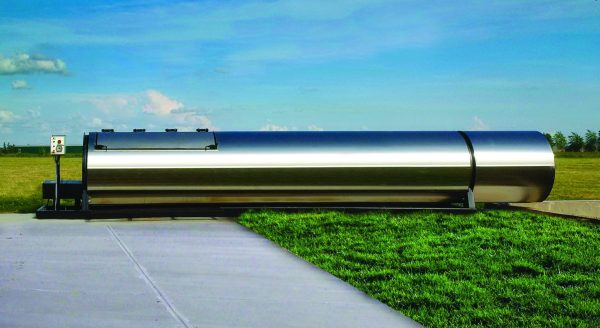 Drum composters are not a new method but are newer to the industry than shed composters. Coming strong onto the scene approximately 15 years ago, drum composters use the same natural aerobic decomposition method to dispose of mortality as shed composters. Because they are a closed system, they are often called “in-vessel” composters. The significant difference is that composting takes place in an enclosed container, and the time and mixing required for full decomposition is accomplished “automatically.” Mortalities are mixed with compost bulking material that both absorbs moisture and provides additional carbon sources for the microbial agents to utilize in their decomposition activity.
Drum composters are not a new method but are newer to the industry than shed composters. Coming strong onto the scene approximately 15 years ago, drum composters use the same natural aerobic decomposition method to dispose of mortality as shed composters. Because they are a closed system, they are often called “in-vessel” composters. The significant difference is that composting takes place in an enclosed container, and the time and mixing required for full decomposition is accomplished “automatically.” Mortalities are mixed with compost bulking material that both absorbs moisture and provides additional carbon sources for the microbial agents to utilize in their decomposition activity.
Most manufacturers of these systems recommend fresh wood shavings as the best choice for the bulking material, as they provide more surface area for microbes and better moisture management. However, fresh shavings can be challenging to obtain in some areas and can be expensive. Clean straw and even old litter can be substituted, but the decomposition process may be negatively affected, and the end product may suffer. A typical recommendation is a ratio of 1.5 pounds of bulking material to 1 pound of mortality. Larger birds may benefit from a higher bulking material rate due to higher moisture content. This mixture is put into one end of a drum system, and the automatic turning of the drum, combined with the length of the system, provides the mixing and time needed to compost the mixture fully. The pounds of mortality anticipated over time dictate the overall length of the system necessary to achieve complete decomposition and affect the overall time required for completion. Drum composting can be considered a “continuous process,” adding daily to the input end resulting in the final product’s daily output. This final product should be stored in a dry, covered location until time for land application.
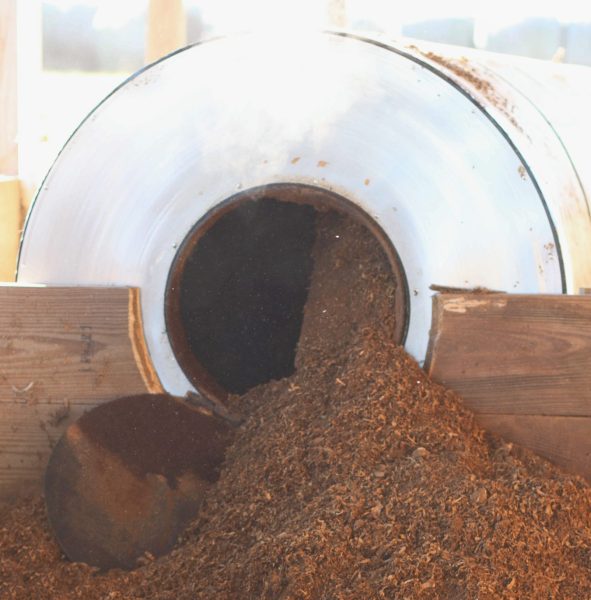 Drum composters can have a high initial installation cost. They benefit from a concrete pad to reside on and are best placed under a protective shed. Sometimes, this can be achieved by installing inside or attached to a litter storage shed. Typical drum systems use low amounts of electricity. The maintenance of these systems is usually low as they move slowly and have few moving parts. The system’s major components, namely the drum and mountings, should last for many years. Electric motors and bearings will need to be maintained and should be expected to need replacement at some time in the future. The system is run by computerized controls or electric relays and timers at the least, so lightning and power surges are of some concern. Proper wiring and grounding are essential. Also, a higher management level is required, as an appropriate mixture of mortality and bulking material is necessary to achieve desirable results. An improper recipe will result in a less desirable product coming out of the other end. Most often,
Drum composters can have a high initial installation cost. They benefit from a concrete pad to reside on and are best placed under a protective shed. Sometimes, this can be achieved by installing inside or attached to a litter storage shed. Typical drum systems use low amounts of electricity. The maintenance of these systems is usually low as they move slowly and have few moving parts. The system’s major components, namely the drum and mountings, should last for many years. Electric motors and bearings will need to be maintained and should be expected to need replacement at some time in the future. The system is run by computerized controls or electric relays and timers at the least, so lightning and power surges are of some concern. Proper wiring and grounding are essential. Also, a higher management level is required, as an appropriate mixture of mortality and bulking material is necessary to achieve desirable results. An improper recipe will result in a less desirable product coming out of the other end. Most often,
poor composting results from too much moisture in the system. If the material exiting the drum is not fully composted, it will need to be loaded again and run through for a second time.
Daily loading of a drum composter, especially during the later weeks of a flock, can be laborious, including adding two components in the correct ratio together into the composter. A large drum input opening that accommodates filling a typical 72′′ tractor loader bucket and easy access to bulking material can significantly benefit an in-vessel system, cutting down on the labor needed. These points should be considered when planning the installation of such a system. Finally, one positive of drum composting is that the process is virtually hidden from the public view. Since the decomposition is taking place inside the drum, nuisance odors are almost all eliminated. Disease control is also more complete as the heat generated inside the proper mixture kills highly contagious viruses, such as laryngotracheitis and other pathogens. Issues with scavengers spreading disease are also eliminated. If done correctly, the output from drum composting is an inert, low-odor, dry, easily spreadable, and valuable soil amendment suitable for crop or pasture application. For additional information on drum or in-vessel composting, see “Rotary Drum Composting of Poultry Mortalities” on the Mississippi State University Extension website.
Mortality Incinerators
Mortality incineration is one of the more familiar methods for disposing of poultry mortality. This method can be especially appropriate for smaller operations or farms with few mortalities, like a typical pullet farm. Incineration is straightforward. You place mortality into an incineration unit that uses a fuel source to maintain a fire to burn up the mortality. The end-product is dry ash that must be manually removed from the unit. The ash can still have small bits of bone, but the entire bird is consumed for the most part. Ash from the incineration of poultry mortalities is a concentrated source of phosphorus and potassium. It can be incorporated into the soil but is not generally considered a soil amendment. It is more often disposed of on-site. Care should be taken to avoid disposal sites with high run-off potential. A good recommendation is to mix the ash with litter and land apply, especially since no large volume is produced.
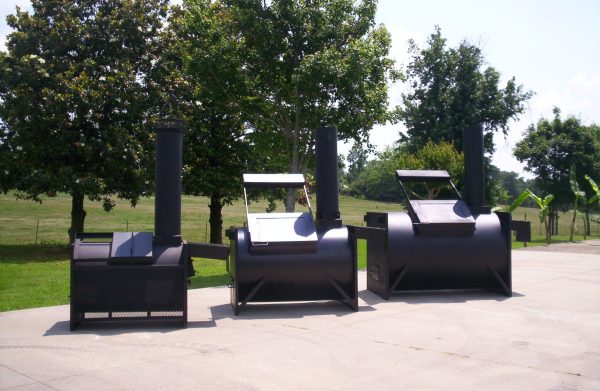 One positive for incinerators is that they have a relatively low installation cost. The incinerator should be designed for commercial use and preferably for poultry or animal rearing facilities. The BTU (British thermal unit) capacity of the incinerator will dictate how long it takes to incinerate a full load thoroughly. The total load capacity will dictate how often a grower can refill an incinerator to dispose of a day’s mortality. Incinerator companies can help find the right size for a farm’s needs. While incineration is generally considered a “clean” process of disposal, proper sizing, maintenance, and operation of the unit are required to maintain a complete burn with as little offensive smoke and odor as possible. Incinerators require considerable maintenance over time, as grates need replacing and burners and blowers must be cleaned regularly and sometimes replaced. Many incinerators can be rebuilt and have major components replaced by the factory. This expense should be considered part of the long-term cost of operation but is considerably less than total replacement. The grower who has no more than the unit’s capacity to dispose of per day should find incineration has a low labor requirement consisting mainly of filling with mortality and then ash removal. However, if the daily mortality exceeds the unit’s capacity, resulting in repeated fill/ de-ash cycles, it can turn into a time and labor-intensive method. Some may install multiple units to distribute the load and lessen the required time. Incinerators take up comparably little space but should be located away from other structures for safety reasons. They should preferably be mounted on concrete slabs and have electrical and fuel access close by.
One positive for incinerators is that they have a relatively low installation cost. The incinerator should be designed for commercial use and preferably for poultry or animal rearing facilities. The BTU (British thermal unit) capacity of the incinerator will dictate how long it takes to incinerate a full load thoroughly. The total load capacity will dictate how often a grower can refill an incinerator to dispose of a day’s mortality. Incinerator companies can help find the right size for a farm’s needs. While incineration is generally considered a “clean” process of disposal, proper sizing, maintenance, and operation of the unit are required to maintain a complete burn with as little offensive smoke and odor as possible. Incinerators require considerable maintenance over time, as grates need replacing and burners and blowers must be cleaned regularly and sometimes replaced. Many incinerators can be rebuilt and have major components replaced by the factory. This expense should be considered part of the long-term cost of operation but is considerably less than total replacement. The grower who has no more than the unit’s capacity to dispose of per day should find incineration has a low labor requirement consisting mainly of filling with mortality and then ash removal. However, if the daily mortality exceeds the unit’s capacity, resulting in repeated fill/ de-ash cycles, it can turn into a time and labor-intensive method. Some may install multiple units to distribute the load and lessen the required time. Incinerators take up comparably little space but should be located away from other structures for safety reasons. They should preferably be mounted on concrete slabs and have electrical and fuel access close by.
The major negative aspect of incineration is fuel cost. Most incinerators in the poultry industry use LP or natural gas as the primary fuel. A 400,000 BTU incinerator will use approximately 4.3 gallons of LP or 4 CCF of natural gas every hour of operation. The cost can add up quickly if it takes several hours a day to fully incinerate a farm’s mortality. Because of the increased time, labor, and cost potential, combined with possible high mortality occurrences, primary incinerator users should consider having an alternative disposal method. These considerations can offset the low initial installation cost and make incineration a higher cost, less attractive method for many growers. However, incineration can still be a highly desirable if a farm has few mortalities. Proper incineration removes any disease threat, eliminates scavenger concerns, and is a “clean disposal method.” For more information on poultry incineration, see “Using Incinerators for Poultry Mortality Management” on the University of Tennessee Agricultural Extension Service website. Note that the economic evaluation in this article dates to 2014 and does not represent today’s current fuel prices.
Mortality Freezers
In some locations, the opportunity to have poultry farm mortality picked up by a rendering company exists and has become a preferred disposal method. This option typically requires a grower to purchase and maintain freezer units that hold the frozen mortality until the rendering company can pick up and transport them to their facility. The freezers resemble commercial trash dumpsters with cooling units on top. Growers usually house the units under some overhead protective structure with a winching system to remove the cooling units for dumping purposes. The grower must supply the power to these units and pay a monthly pick-up fee to the rendering company. The monthly service fee can vary and has recently increased based on rising fuel costs and fewer rendering plants accepting the product. The freezers’ onboard refrigeration units must be rigorously maintained for best performance. Growers have reported varying results in terms of longevity. Some have successfully maintained and used freezers with little extra expense for many years. Others have experienced extensive maintenance expenses and even considered purchasing new units yearly as a cheaper and easier option than maintaining the old ones.
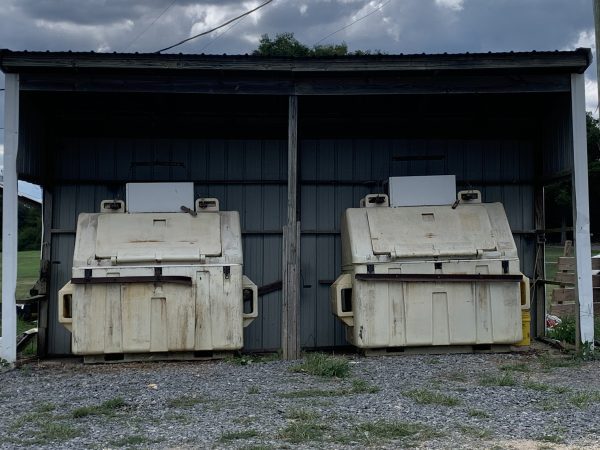 Despite potentially high maintenance costs, mortality freezers have gained favor because of the simplicity and low labor required for daily mortality disposal. If a freezer unit operates properly, disposal is as simple as opening the door and loading the birds inside. There is no end- product output to deal with, good or bad. However, if the unit is malfunctioning, a serious problem of thawed, decomposing mortalities can quickly arise. This is why it is often recommended that multiple units be located on a farm, even if one unit can handle average mortality. The rendering company may require multiple freezers on-site according to their pick-up scheduling. Multiple units will also help address a high mortality situation. In the past, rendering companies have worked hard to assist growers with high mortality situations with more frequent pick-ups, but these additional pick-ups may carry added fees.
Despite potentially high maintenance costs, mortality freezers have gained favor because of the simplicity and low labor required for daily mortality disposal. If a freezer unit operates properly, disposal is as simple as opening the door and loading the birds inside. There is no end- product output to deal with, good or bad. However, if the unit is malfunctioning, a serious problem of thawed, decomposing mortalities can quickly arise. This is why it is often recommended that multiple units be located on a farm, even if one unit can handle average mortality. The rendering company may require multiple freezers on-site according to their pick-up scheduling. Multiple units will also help address a high mortality situation. In the past, rendering companies have worked hard to assist growers with high mortality situations with more frequent pick-ups, but these additional pick-ups may carry added fees.
Biosecurity is paramount on poultry farms, and this disposal method presents a unique challenge to biosecurity principles. Scavengers and disease spread on the farm are not typically a concern with this method. However, integrators are concerned that the trucks picking up the mortality travel from farm to farm, often many farms in a day, before they are fully loaded and returned to the rendering plant. This creates the potential for farm-to-farm contamination. For this reason, integrators often require that freezer units be located as far away from the actual grow-out houses as possible. This can require growers to invest additional money into off-site protective structures and electrical service and add time and labor to daily mortality disposal. Mortality rendering companies work closely with integrators when contagious diseases are prevalent and try to limit cross contamination as much as possible with specific pick-up routing and truck decontamination between stops.
Mortality Dehydrator
Dehydration as an on-farm method of mortality disposal is a new option for growers to consider. Currently, only a handful of states have officially approved dehydration. Alabama has not yet approved this method at the time of this writing. It is based on the technology used by rendering plants to dehydrate and render mortality into materials usable for feed products. Farm units are scaled-down versions of those much larger units. Dehydrators will generally produce output biomass that is 30 percent to 40 percent of the input by weight. They come in varying sizes based on pounds of mortality they can handle in 12 hours. That amount can vary depending on the desired output to input weight ratio. For example, the maximum mortality a 1,300-pound unit can process is 1,300 pounds of mortality dried down to 40 percent of initial weight, twice in 24 hours for a total of 2,600 pounds of mortality per 24 hours, producing 1,040 pounds of output. If less output material is desired, the total input capacity will decrease. From that standpoint, a farm should consider its recurring mortality during the last week of a flock and base the size and number of units on those pounds. These units are designed for a single load and run cycle, preventing the grower from adding additional mortality during the drying cycle. The process cannot be stopped to add more mortality once the cycle begins. You should choose one size up or install additional units if daily mortality total pounds approach the daily capacity. In our economic example below, we expect 600 to 800 pounds of mortality to dry down to 180 to 240 pounds of biomass output. A secondary method, such as composting or incinerating, is advisable as a backup.
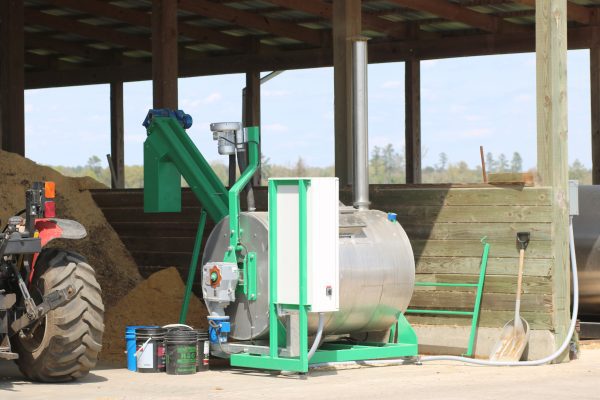 These units use electricity, and potentially other fuels, to generate the heat that dehydrates the mortalities and grinders that break them down into a meal-like finished product. This output has been exposed to sterilizing temperatures and is safe to handle. It is dry, has a low odor, and can be land applied and used in other ways. The units are designed to expel the biomass product automatically into a covered holding bin or container. These units should be housed in a dry, protected location and must have access to electricity and possibly other fuel. Entirely electric units will need commercial wiring to supply the resistance heating elements that drive the system. Proper wiring and grounding are essential as these systems all use computerized controls. Daily labor mainly consists of loading the daily mortality into the unit and setting it to run. It should be expected that there will be maintenance required on the heating elements and possibly other moving parts. Regular cleaning of the inside should increase the unit’s efficiency and longevity. Actual maintenance requirements will only be known once a number of these units have been used over several years.
These units use electricity, and potentially other fuels, to generate the heat that dehydrates the mortalities and grinders that break them down into a meal-like finished product. This output has been exposed to sterilizing temperatures and is safe to handle. It is dry, has a low odor, and can be land applied and used in other ways. The units are designed to expel the biomass product automatically into a covered holding bin or container. These units should be housed in a dry, protected location and must have access to electricity and possibly other fuel. Entirely electric units will need commercial wiring to supply the resistance heating elements that drive the system. Proper wiring and grounding are essential as these systems all use computerized controls. Daily labor mainly consists of loading the daily mortality into the unit and setting it to run. It should be expected that there will be maintenance required on the heating elements and possibly other moving parts. Regular cleaning of the inside should increase the unit’s efficiency and longevity. Actual maintenance requirements will only be known once a number of these units have been used over several years.
The significant downsides of this method are the high initial installation cost and the requirement of large amounts of electricity or other fuel to operate the unit. Although these units are new to the grower market, and there is not a lot of poultry farm data, they are expected to have reasonably long lives of more than 10 years approaching 20 years without significant maintenance or replacement. Also, as with incinerators and drum composters, this enclosed disposal method eliminates problems with scavengers and disease spread. For more information from dehydrator manufacturers, see the websites for Innovative Poultry Products and Triple Green Products.
Economics of Mortality Disposal
Mortality disposal has a significant economic impact on a commercial poultry grower. To compare the five methods discussed here, we examine the average cost of each on a per-bird-per-day basis (a day the farm has birds in-house) for a 20-year average. We will apply this to an Alabama broiler farm with the following specifications. These numbers are estimates for purposes of comparison only. The numbers may vary for your farm.
- Two 66-foot wide x 600-foot long modern tunnel houses
- 0.76 stocking density
- 6.5 pounds target weight
- 7 percent average mortality per flock
- 49-day average flock with 14-day average out-time
- 4.5 pounds average mortality weight per bird
This results in the following:
- 104,211 birds placed per flock
- 5.8 flocks per year
- 284 bird days per year
- 670 pounds average daily mortality rate (much less early flock, more late flock)
For operational costs, we assume the following:
- Shavings – $60.00/ton
- LP gas – $3.00/gallon
- Diesel fuel – $5.00/gallon
- Electricity – $0.12/kWh
- Labor – $15.00/hour
Installing each method requires building or purchasing the equipment. We assume this is financed through a five-year bank loan at 6 percent interest. No depreciation is calculated.
Table 1. Annual Purchase/Rental Costs for Poultry Mortality Disposal Methods*
*Assumes building a stand-alone compost shed only, purchase and set-up costs for a dehydrator, incinerator, composter, and freezers. Also considered is the increased rental cost for a grower who already has two freezers on-site.
| Disposal Method | Purchase Price | Amortized Cost Per Year | Rental Cost Per Year |
|---|---|---|---|
| 6-Bin Compost Shed | $28,500.00 | $6,611.82 | - |
| Electric Dehydrator | $55,000.00 | $12,759.65 | - |
| LP Incinerator | $12,500.00 | $2,899.92 | - |
| Drum Composter (40’) | $44,000.00 | $10,207.72 | - |
| Freezers (2) Purchased | $4,900.00 | $1,136.77 | $7,140.00 |
| Freezers (2) Existing | - | - | $7,140.00 |
Table 2. Annual Fuel and Energy Usage for Poultry Mortality Disposal Methods*
*Fuel usage amounts consider direct fuel and energy use by the method and secondary fuel requirements for loading, unloading, etc.
| Disposal Method | Fuel Type | Average Daily Fuel Usage | Fuel Cost Per Year |
|---|---|---|---|
| 6-Bin Compost Shed | Tractor Diesel (gallons) | 0.50 | $709.72 |
| Electric Dehydrator | Electricity (kWh) | 74.44 | $2,535.79 |
| LP Incinerator | LP Gas (gallons) | 5.13 | $4,369.05 |
| Drum Composter | Electricity (kWh) Electricity (kWh) | 1.10 | $48.00 |
| Freezers (2) Purchased | Electricity (kWh) Electricity (kWh) | 49.32 | $1,680.00 |
| Freezers (2) Existing | Electricity (kWh) Electricity (kWh) | 49.32 | $1,680.00 |
Table 3. Annual Labor and Maintenance for Poultry Mortality Disposal Methods*
*Estimated hired labor cost estimates for all five methods. Also includes maintenance estimates as a percentage of purchase costs. Shavings cost for drum composter assumes all bulking material is purchased fresh shavings.
| Disposal Method | Daily Labor (hour) | Labor Cost Per Year | Shavings Cost Per Year | Maintenance Cost Per Year |
|---|---|---|---|---|
| 6-Bin Compost Shed | 1.25 | $5,322.92 | - | $570.00 |
| Electric Dehydrator | 0.50 | $2,129.17 | - | $1,925.00 |
| LP Incinerator | 1.00 | $4,258.33 | - | $1,500.00 |
| Drum Composter | 0.75 | $3,193.75 | $8,554.94 | $880.00 |
| Freezers (2) Purchased | 0.25 | $1,064.58 | - | $490.00 |
| Freezers (2) Existing | 0.25 | $1,064.58 | - | $490.00 |
Additional Model Assumptions:
- Assumes a 40 x 60 litter shed already exists that could house a dehydrator or drum composter or freezers.
- Assumes farm has tractor and other mortality transportation equipment.
- Assumes stand-alone 6-bin composter shed only — NOT a litter shed/composter combo.
- Incinerator cost assumes a rebuild at 10 years for 30 percent of the purchase cost.
- Dehydrator maintenance cost is set at 3.5 percent of purchase cost per year to account for the long-term unknowns for this unit in farm use.
Drum composters using fresh shavings produce a product that is the combined volume of mortality plus bulking agent. Mixing this with other litter also increases the overall litter volume. Also, the value of all litter produced from the houses can be used as an offset to mortality disposal costs. For this evaluation, we assume that litter has a realized value to the grower—after all costs of removing, storing, loading, and spreading—of $10 per ton. We also assume that properly handled litter and compost are being produced. In our example farm, normal litter produced is estimated to bring approximately $3,650 of value per year. The various mortality disposal methods would supplement that to varying extents. All these factors are calculated and shown in the total annual litter value in table 4.
Table 4. Final Summary of Overall Costs for Poultry Mortality Disposal Method
*Total costs are calculated for a 20-year per bird-day cost that includes all variable and fixed costs, without depreciation. Annual litter values offset a portion of the annual cost of each method.
| Disposal Method | Total Year One Cost | Total Annual Litter Value | 10-Year Total Cost | 20-Year Total Cost | 20-Year Average Cost Per Bird-Day |
|---|---|---|---|---|---|
| 6-Bin Compost Shed | ($9,445.87) | $3,768.59 | ($61,399.57) | ($89,740.05) | ($15.81) |
| Electric Dehydrator | ($15,414.60) | $3,935.00 | ($90,347.79) | ($116,897.33) | ($20.59) |
| LP Incinerator | ($9,377.58) | $3,649.73 | ($79,276.18) | ($147,802.76) | ($26.03) |
| Drum Composter | ($17,666.22) | $5,218.19 | ($125,623.64) | ($200,208.67) | ($35.26) |
| Freezers (2) Purchased | ($7,861.63) | $3,649.73 | ($72,932.42) | ($140,181.00) | ($24.69) |
| Freezers (2) Existing | ($6,724.86) | $3,649.73 | ($67,248.58) | ($134,497.16) | ($23.69) |
Additional Values Gained from Output Products
Composting, both shed based and in-vessel, produces a product that has value as soil amendments. Dehydration also produces a bio-mass output that potentially has value. Compared to the litter generated in the production house, the volume of product produced directly from mortality disposal is minimal. However, to fully evaluate the economic impact of any of these mortality methods, we must consider that value and the impact a method has on litter value overall. For example, a shed composter requires that some litter be used to operate, but the mortality overall adds volume to that litter and adds to the final volume to be spread.
Conclusions
When all the inputs and their costs are considered, it becomes apparent that the long-term costs per bird- day for all methods on the example farm are relatively similar. The drum composter is the highest primarily because the example uses the recommended rate of fresh shavings for all bulking material. Growers have options that could lower that input cost substantially, and growers using this method should explore those options with the composter manufacturers. The 6-bin compost shed has the lowest daily cost, mainly due to the low energy requirement and maintenance costs associated with this long-term investment. However, this method has extensive management requirements to get the job done right and produce good-quality compost without causing negative environmental impacts. The other methods are comparable on a per bird-day cost basis. Therefore, growers need to consider other reasons to choose one method over the other.
Additional Questions to Consider:
- How much time do I have to manage my mortality disposal method?
- Can my hired help do this correctly every day?
- Do I need to build an additional structure to house a method?
- Am I in an area where I need to be more concerned about neighbor relations and, therefore, choose a method with the least possible negative impact potential?
Growers must also consider how long they intend to grow. The right choice may be different for someone just beginning versus someone planning to retire within 5 years.
Additional Information
For more information on poultry mortality disposal management in Alabama, please visit the following websites:
- Alabama Department of Environmental Management (ADEM), “Authorized Methods of Poultry Mortality Management”
 Dennis Brothers, Associate Extension Professor, Farm and Agribusiness Management, and Kent Stanford, Extension Specialist, Associate Extension Professor, Agronomic Crops, both with Auburn University
Dennis Brothers, Associate Extension Professor, Farm and Agribusiness Management, and Kent Stanford, Extension Specialist, Associate Extension Professor, Agronomic Crops, both with Auburn University
New August 2022, Mortality Disposal Methods for Commercial Poultry Growers, ANR-2921

